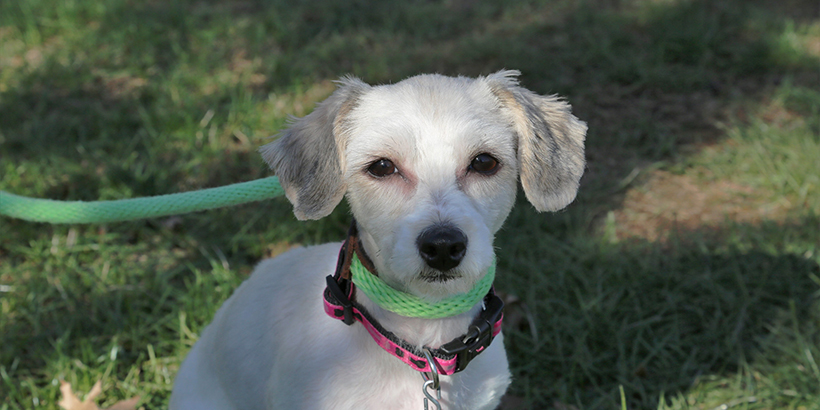
Walking your dog on a leash should be a pleasurable experience for both you and your furry friend. But what happens when it’s not? An easy fix may be swapping out current walking gear for a front-clip body harness or head halter. For dogs who may be a little more challenging, consider these methods.
Before you get started:
Know the Importance of Markers
To “mark” means that as soon as the dog does what you want, you IMMEDIATELY say “Yes!” and then follow with a reward. The reward can be food, verbal praise, a toy, a brief pet, or continuing to walk forward. Marker timing is very important. Marking too soon or too late tells the dog something other than what you’re precisely looking for. You can mark and reward whether or not you asked for the behavior. For example, mark and reward whenever the dog is walking next to you, even if they’re only passing by.
Here are 4 loose leash walking methods to try:
Luring
When you feel tension on the leash IMMEDIATELY stop walking. With a treat in your left hand, stick the food right in front of your dog’s nose to let them sniff and lick it. Slowly move your hand (with them following the treat) toward your left side (by your knee). You’ll need to make a wide
circle/arch with the treat to bring their body up behind and next to you. Mark with a “Yes!” reward, then continue walking. You can pair this method with the others.
Hansel & Gretel
Starting with your dog beside you, place (or drop) treats to the ground while walking. You’ll be leaving a continuous trail of “breadcrumbs” for the dog to follow. Eventually you can slow the flow of treats from continuous to every so often. If the dog moves ahead without focusing on you, try treating faster and/or using a higher-value treat. A modified version of this is to have the dog eat out of your hand while walking beside you. This may work better for some dogs, but try both to see which they respond to better. Mark with “Yes!” and reward whenever the dog is beside you, even if they’re only passing by.
Red Light, Green Light
When you feel tension on the leash IMMEDIATELY stop walking and wait. When you feel the leash go slack, mark with “Yes!” and simply start walking again. Repeat any/all times you feel tension on the leash. You may coax the dog to take a step toward you in order to produce a slack leash if they do not do so on their own.
Change in Direction
Similar to Red Light, Green Light, when you feel tension on the leash, you’re going to say “Nope!” and IMMEDIATELY turn around and walk in the opposite direction. Repeat whenever you feel tension of the leash. Mark with “Yes!” whenever the dog is walking close enough to have a loose leash.
Tips for Success!
- Try each method a few times to see which they’re most responsive to. Dogs who are unmotivated by food tend to respond well with Red Light, Green Light and/or Change in Direction because the primary reward here is being able to move forward and continue walking.
- Consistency among handlers and on each walk will help avoid confusion for the dog.
- In the beginning you may find that it takes a while to even get to the end of the driveway. That’s OK! Focus on the quality of each step, NOT quantity. The more you practice the methods, the quicker they’ll be walking with a loose leash.
- Use high-value treats likes diced hot dogs, cheese, freeze-dried liver treats or anything your dog goes bonkers for! Treats should be no larger than the size of your fingernail.

